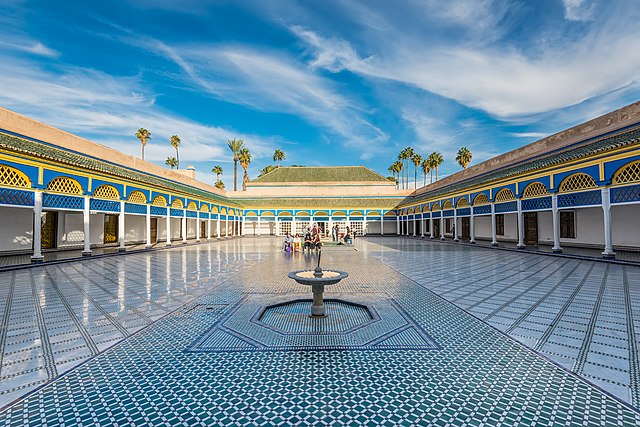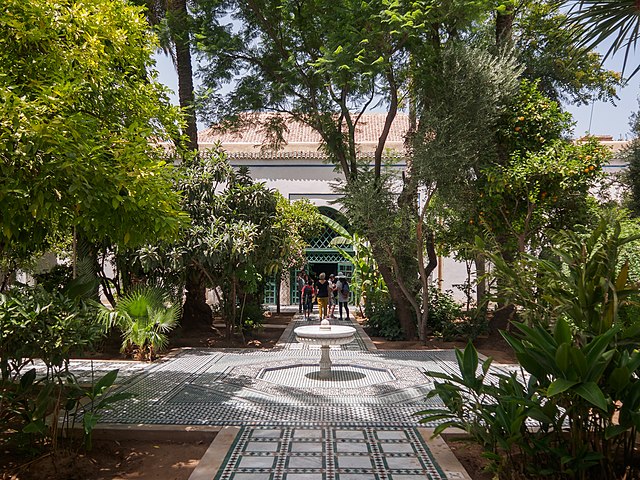The Bahia Palace is a mid to late 19th-century palace in Marrakesh, Morocco. The palace was first begun by Si Musa, grand vizier of Alaouite sultan Muhammad ibn Abd al-Rahman, in 1859 and then continued and expanded by his son Si Ba Ahmed ibn Musa, grand vizier of Sultan Moulay Abdelaziz between 1894 and 1900. Today it is a well-known historic monument and tourist attraction in the city.
The Grand Courtyard of the Bahia Palace
Entrance to the palace grounds
Garden path leading from the gate to the palace
Second gateway, the entrance to the main palace
A riad or riyad is a type of garden courtyard historically associated with house and palace architecture in the Maghreb and al-Andalus. Its classic form is a rectangular garden divided into four quadrants by two paved paths intersecting in the center, where a fountain is typically situated. The planted areas are usually sunken below the level of the paths. Its origin is generally attributed to traditional Persian gardens whose influence spread during the Islamic period. The term "riad" is nowadays often used in Morocco to refer to a hotel or guesthouse-style accommodation with shared common areas and private rooms, often within a restored traditional mansion.
A riad garden in the Bahia Palace of Marrakesh, built in the late 19th and early 20th centuries
Interior garden in the Generalife of the Alhambra, in Granada, a variation of the riad element in Muslim palace architecture of the region
The Badi Palace in Marrakesh, a riad-style palace on a grand scale, built in the late 16th century by Saadian sultan Ahmad al-Mansur
A restored house in riad-style in Fez








